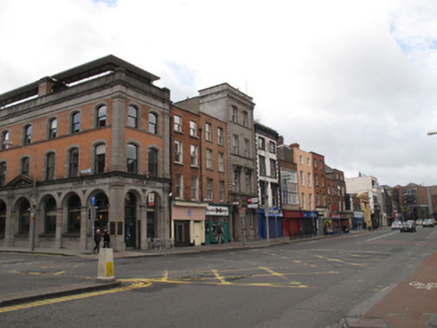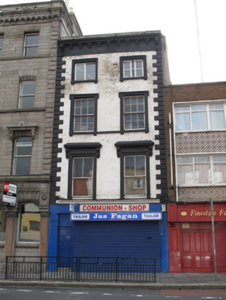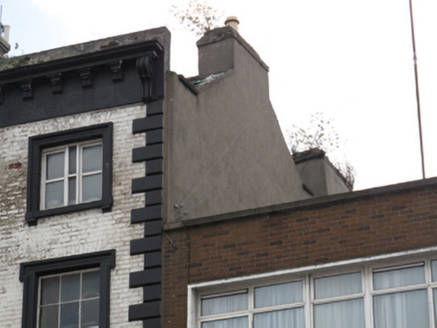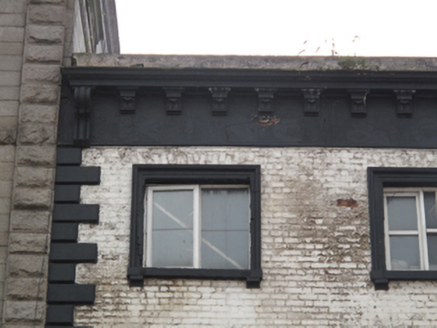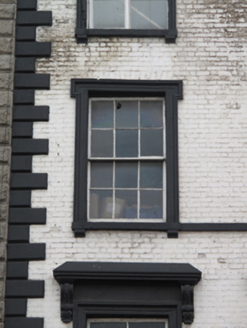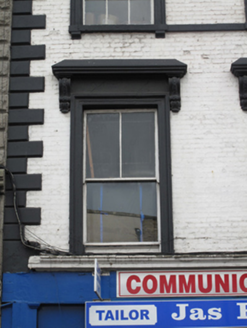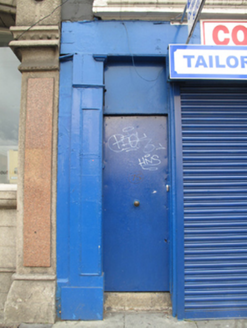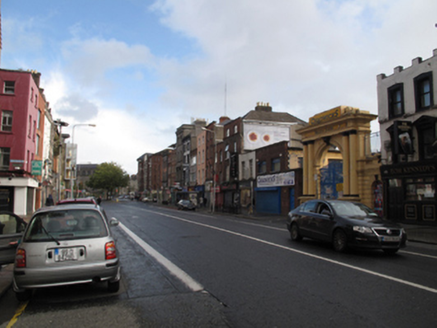Survey Data
Reg No
50080569
Rating
Regional
Categories of Special Interest
Architectural, Social
Original Use
House
In Use As
Shop/retail outlet
Date
1770 - 1790
Coordinates
314848, 233873
Date Recorded
04/11/2013
Date Updated
--/--/--
Description
Terraced two-bay four-storey house, built c.1780, remodelled c.1840, having recent shopfront to front (north) elevation. M-profile pitched roof, hipped to east, with render chimneystacks and clay chimney pots, hidden behind rendered parapet. Rendered fascia and cornice having scrolled consoles and modillions to parapet. Painted brick laid in Flemish bond with render quoins to front elevation, rendered walls to west elevation. Square-headed window openings with render architraves, cornices on scrolled consoles to first floor windows. Replacement timber windows to third floor, six-over-six pane timber sash windows to second floor, two-over-one pane timber sash windows to first floor. Square-headed door opening to east of shopfront, with recent steel door and granite step. Shopfront having steel shutter.
Appraisal
This mid-Georgian building retains much of its early form and design, including timber sash windows which lend a patina of age. Later stucco detailing provides artistic interest, and demonstrates a desire to update the building to contemporary fashions. Now largely surrounded by buildings of a more recent date, it adds important historic character to the street. The Dublin Street Directory of 1862 lists it as the property of Thomas F. Cleary, draper, milliner and Manchester warehouseman, suggesting that this site has a long commercial association. Thomas Street developed along the ancient Slige Mor highway to the west, and was named after an abbey dedicated to Saint Thomas the Martyr, which was established in the area in 1177. The city water course partially ran along the street until it was paved over in 1696, and the ready availability of water contributed to the development of the street as a centre of brewing and distilling.
